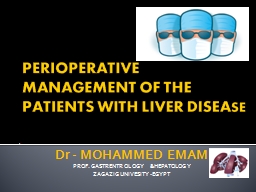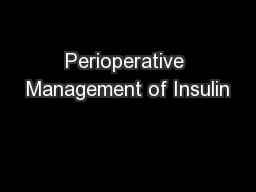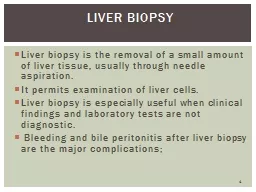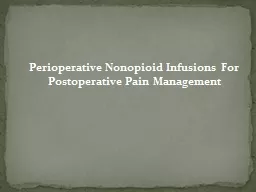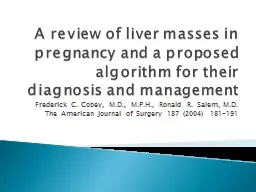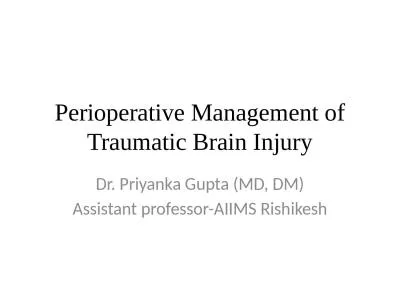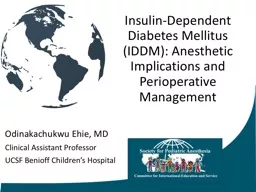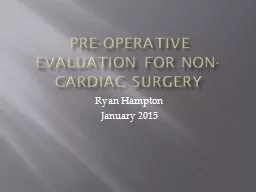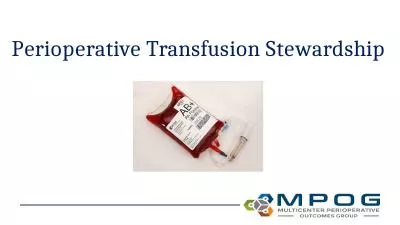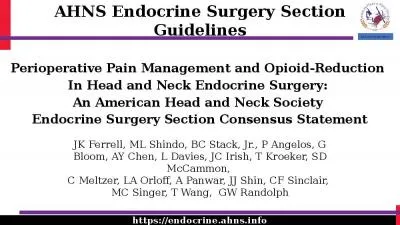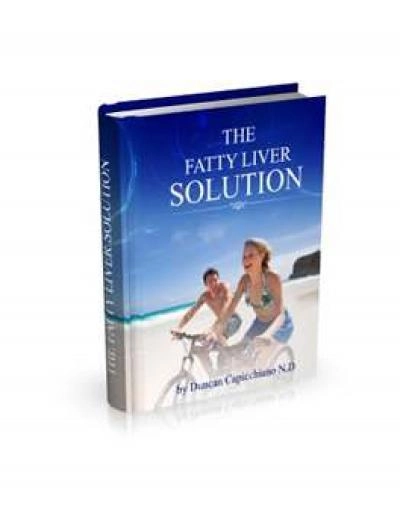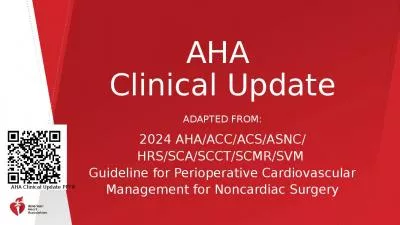PPT-PERIOPERATIVE MANAGEMENT OF THE PATIENTS WITH LIVER DISEA
Author : jasmine | Published Date : 2024-02-02
SE Dr MOHAMMED EMAM PROF GASTRENTROLOGY ampHEPATOLOGY ZAGAZIG UNIVESITY EGYPT INTRODUCTION Due to the loss of hepatic reserve capacity and because of other
Presentation Embed Code
Download Presentation
Download Presentation The PPT/PDF document "PERIOPERATIVE MANAGEMENT OF THE PATIENTS..." is the property of its rightful owner. Permission is granted to download and print the materials on this website for personal, non-commercial use only, and to display it on your personal computer provided you do not modify the materials and that you retain all copyright notices contained in the materials. By downloading content from our website, you accept the terms of this agreement.
PERIOPERATIVE MANAGEMENT OF THE PATIENTS WITH LIVER DISEA: Transcript
Download Rules Of Document
"PERIOPERATIVE MANAGEMENT OF THE PATIENTS WITH LIVER DISEA"The content belongs to its owner. You may download and print it for personal use, without modification, and keep all copyright notices. By downloading, you agree to these terms.
Related Documents

